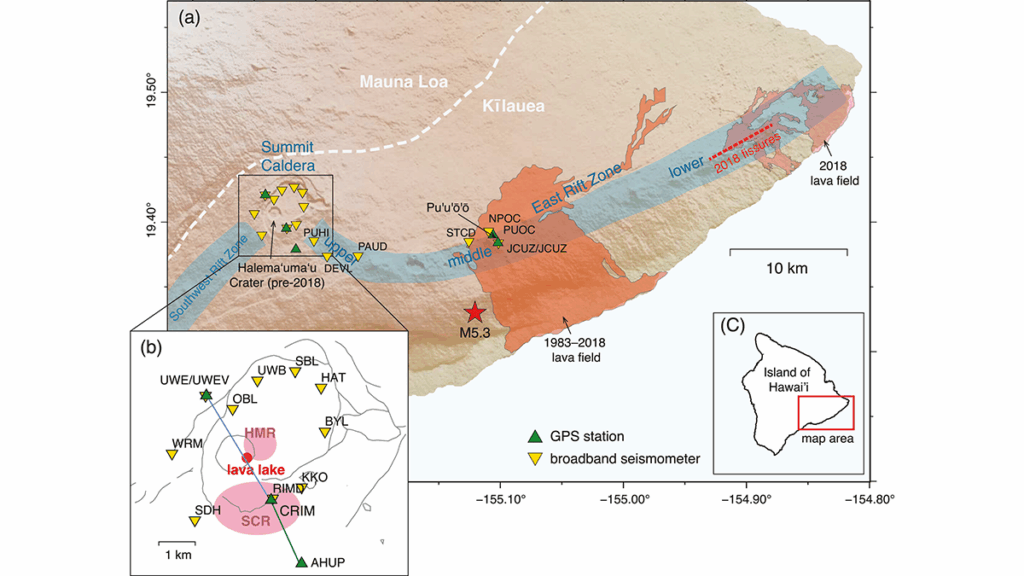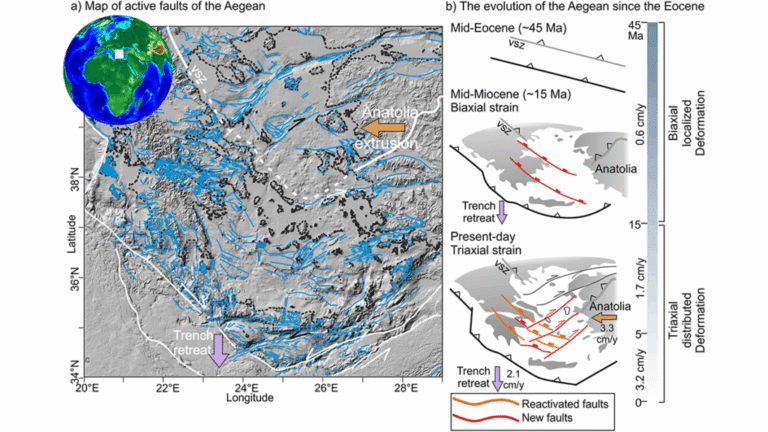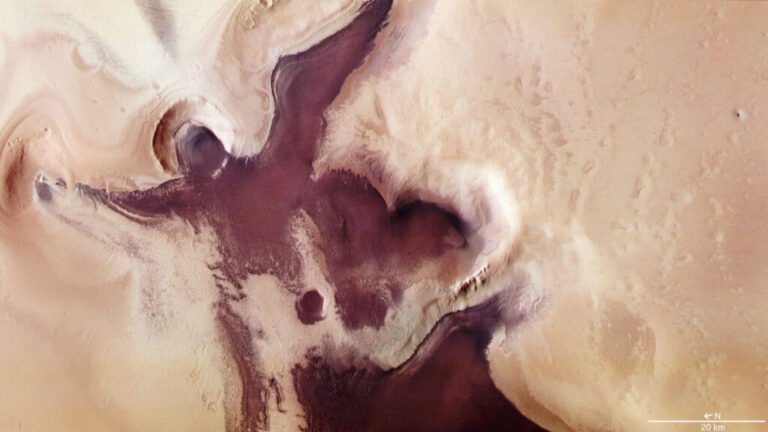

Editors’ Highlights are summaries of recent papers by AGU’s journal editors.
Source: AGU Advances
The Hawaiian Islands formed through the Pacific plate’s movement over a relatively stationary, hot mantle plume, creating a succession of progressively older volcanic centers. New land continues forming on the Big Island’s south side, where the Kīlauea volcano system has remained active for decades. After nearly 40 years of spectacular surface flows entering the sea at Pu’u’ō’ō, volcanic activity shifted to the summit caldera.
Wu et al. [2025] employ seismological techniques to analyze subtle changes in shallow crustal velocities from 2013 to 2018, combining these data with geodetic and geological observations to better understand magma reservoir interactions between Kīlauea’s caldera and Pu’u’ō’ō. Their analysis reveals a fascinating sequence of cross-communication involving pressurization and magma transport processes affected by earthquake valving. When integrated with other monitoring and modeling, such research provides valuable insights into Kīlauea’s plumbing and basaltic volcanic systems more broadly. The work also reemphasizes the importance of seismological monitoring, and deployment of dense seismic networks at as many active volcanoes as possible would enable new comparative analyses.
Citation: Wu, S.-M., Lin, G., & Shearer, P. (2025). Seismic velocity monitoring reveals complex magma transport dynamics at Kīlauea Volcano prior to the 2018 eruption. AGU Advances, 6, e2025AV001759. https://doi.org/10.1029/2025AV001759
—Thorsten Becker, Editor, AGU Advances
Text © 2025. The authors. CC BY-NC-ND 3.0
Except where otherwise noted, images are subject to copyright. Any reuse without express permission from the copyright owner is prohibited.

